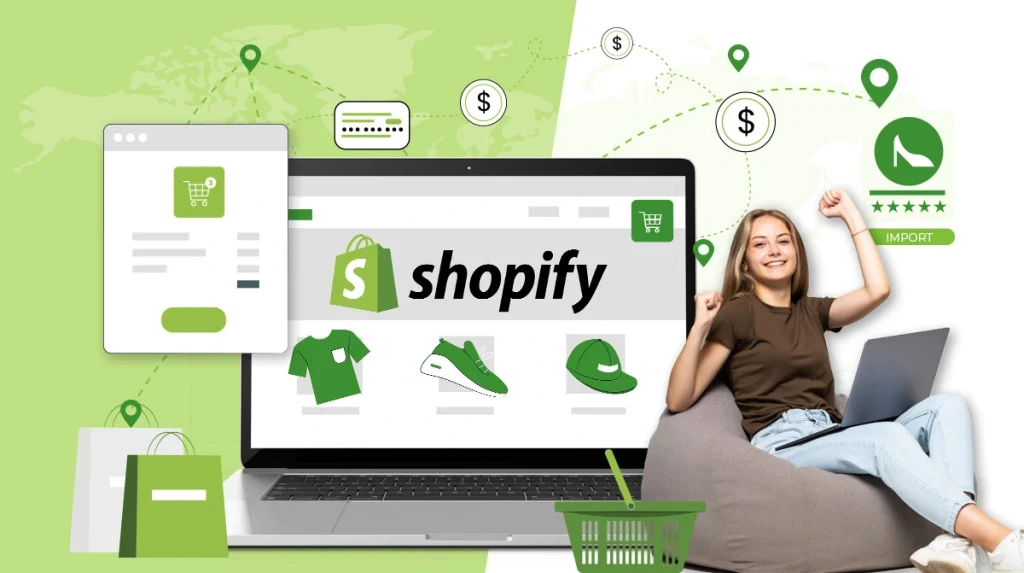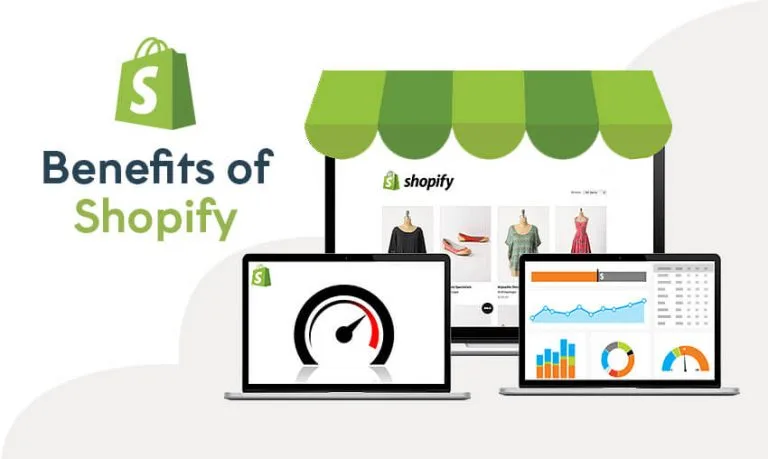Shopify has revolutionized the way businesses set up and run online stores. If you’re wondering, how does Shopify work? this blog is your go-to guide. From creating a storefront to managing sales, Shopify makes e-commerce accessible for everyone, even without technical expertise.
What is Shopify?
Shopify is an all-in-one e-commerce platform that allows users to create, customize, and manage online stores. It provides everything you need to sell products online, including:

- A customizable storefront.
- Inventory management tools.
- Secure payment gateways.
- Marketing and analytics features.
Launched in 2006, Shopify is now one of the most popular platforms worldwide, empowering over 4 million businesses.
How Does Shopify Work?
Here’s a step-by-step explanation of how Shopify works:

1. Sign Up and Create an Account
- Visit Shopify’s website and sign up for a free trial.
- Provide basic details like your email address and store name.
- Once registered, you’ll access Shopify’s admin dashboard, where you can manage everything about your store.
2. Customize Your Store
- Choose a Theme: Shopify offers free and premium themes to match your brand’s identity. These themes are responsive and customizable.
- Brand Your Store: Add your logo, adjust colors, and create a unique layout that represents your business.
3. Add Products
- Go to the “Products” section in your dashboard.
- Add product details like name, description, price, and high-quality images.
- Organize products into collections (e.g., by category or season).
4. Set Up Payments
- Shopify Payments: Shopify’s built-in gateway supports major payment methods like credit cards, Apple Pay, and Google Pay.
- Third-Party Gateways: You can integrate PayPal, Stripe, or other services.
5. Configure Shipping Options
- Define shipping rates based on location, weight, or price.
- Integrate with shipping carriers for real-time rates and tracking.
6. Launch Your Store
- Once you’ve customized your store and added products, make it live by selecting a Shopify plan.
- Choose a custom domain or use Shopify’s default domain (e.g., mystore.myshopify.com).
7. Manage and Grow Your Business
- Track Orders: Use the dashboard to manage and fulfill orders.
- Analytics: Shopify provides insights into sales, traffic, and customer behavior.
- Apps and Plugins: Extend functionality with tools for email marketing, dropshipping, SEO, and more.
Advanced Features of Shopify
1. Shopify POS (Point of Sale)
Shopify offers POS tools that enable businesses to manage both online and in-person sales seamlessly. This feature is especially useful for brick-and-mortar businesses looking to integrate their operations.
2. Multichannel Selling
Sell your products on platforms like Amazon, Facebook, Instagram, TikTok, and even eBay, all managed from the Shopify dashboard.
3. Abandoned Cart Recovery
Shopify automatically sends emails to customers who leave items in their carts, helping you recover lost sales.
4. International Capabilities
With multi-currency and multi-language support, Shopify is ideal for businesses aiming for a global audience.
5. Shopify App Store
Access thousands of apps to extend your store’s functionality. Popular options include apps for email marketing, SEO optimization, product reviews, and live chat support.
Shopify Pricing Plans in Detail

Shopify offers flexible pricing to suit various business needs:
| Plan Name | Monthly Cost (USD) | Description |
|---|---|---|
| Starter | $5 | Enables selling through social media and messaging apps. |
| Basic Shopify | $39 | Ideal for new businesses; includes a full online store and essential features. |
| Shopify | $105 | Suited for growing businesses; offers additional staff accounts and standard reporting. |
| Advanced Shopify | $399 | Designed for larger operations; includes advanced reporting and reduced transaction fees. |
| Shopify Plus | Custom pricing | Tailored for enterprise-level businesses; offers advanced features and dedicated support. |
Each plan includes web hosting, SSL security, and round-the-clock customer support. Shopify’s 3-day free trial helps you explore the platform before committing.
Shopify Integrations and Automation
1. Marketing Tools
Run email campaigns, create discount codes, and track marketing performance directly from your Shopify dashboard.
2. Dropshipping
With apps like Oberlo, Spocket, and Modalyst, you can start a dropshipping business without holding inventory.
3. Automation Features
Shopify Flow (available on Advanced plans) lets you automate repetitive tasks like inventory updates, customer tagging, and email notifications.
Who Should Use Shopify in 2025?
Shopify is versatile and suits a variety of users:
- Entrepreneurs: Perfect for launching side hustles or small businesses.
- Retail Chains: Manage multiple stores with centralized control.
- Global Sellers: Leverage international tools for cross-border e-commerce.
- Creators: Sell digital products, courses, or subscriptions effortlessly.
Top Benefits of Shopify

| Feature | Description |
|---|---|
| Ease of Use | Shopify’s drag-and-drop editor simplifies store creation, even for beginners. |
| Comprehensive Support | Get 24/7 customer support via chat, email, or phone. |
| SEO-Friendly | Built-in tools help optimize your store for search engines, driving organic traffic. |
| Secure and Reliable | Shopify ensures PCI compliance and a 99.9% uptime guarantee. |
| Customizable Checkout | Tailor your checkout experience to reduce cart abandonment and boost conversions. |
Common Challenges and Their Solutions
1. Customization Limits
While Shopify is beginner-friendly, advanced customizations may require coding knowledge. Hiring a Shopify expert or developer can solve this issue.
2. Transaction Fees
Avoid transaction fees by using Shopify Payments instead of third-party gateways.
3. Learning Curve for Advanced Features
Though Shopify is user-friendly, mastering advanced tools like automation or reporting may take time. Shopify Academy offers free tutorials to help.
FAQs About Shopify
1. How Much Time Does It Take to Set Up a Shopify Store?
With its intuitive interface, you can set up a basic store in a few hours. However, customizing your store may take additional time depending on your needs.
2. Can I Switch Plans Later?
Yes, Shopify allows you to upgrade or downgrade plans as your business evolves.
3. Is Shopify Suitable for Selling Digital Products?
Absolutely! Shopify supports digital downloads and services alongside physical products.
4. Does Shopify Handle Taxes Automatically?
Shopify can calculate taxes automatically based on your location and customers’ regions, simplifying compliance.
Conclusion
Shopify in 2025 continues to be the ultimate e-commerce solution for businesses of all sizes. Its versatility, ease of use, and powerful features make it a top choice for entrepreneurs and established brands alike. Whether you’re selling products locally or internationally, Shopify equips you with the tools needed to succeed in the digital marketplace. Ready to launch your store? Start your Shopify journey today and bring your business vision to life.

